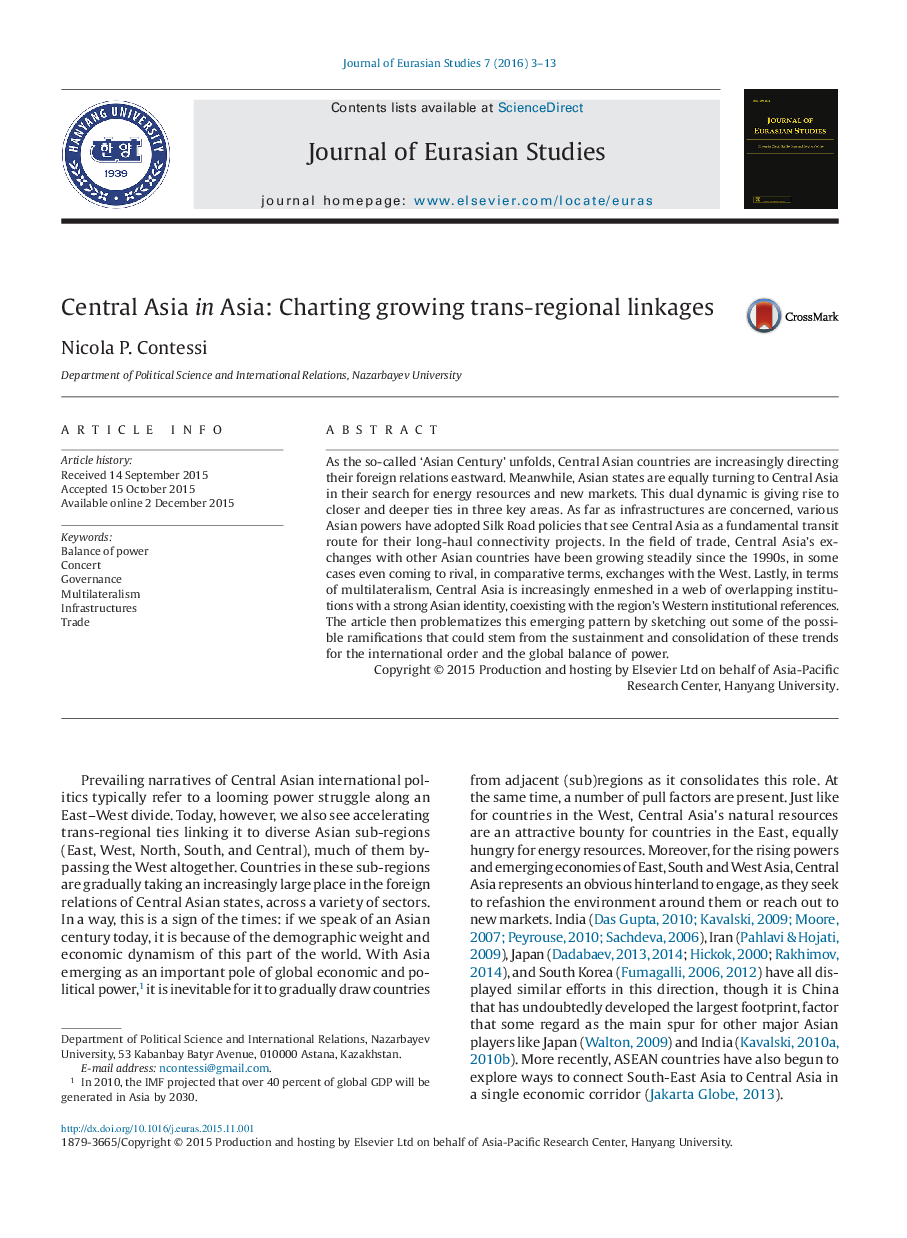| Article ID | Journal | Published Year | Pages | File Type |
|---|---|---|---|---|
| 1127175 | Journal of Eurasian Studies | 2016 | 11 Pages |
As the so-called ‘Asian Century’ unfolds, Central Asian countries are increasingly directing their foreign relations eastward. Meanwhile, Asian states are equally turning to Central Asia in their search for energy resources and new markets. This dual dynamic is giving rise to closer and deeper ties in three key areas. As far as infrastructures are concerned, various Asian powers have adopted Silk Road policies that see Central Asia as a fundamental transit route for their long-haul connectivity projects. In the field of trade, Central Asia's exchanges with other Asian countries have been growing steadily since the 1990s, in some cases even coming to rival, in comparative terms, exchanges with the West. Lastly, in terms of multilateralism, Central Asia is increasingly enmeshed in a web of overlapping institutions with a strong Asian identity, coexisting with the region's Western institutional references. The article then problematizes this emerging pattern by sketching out some of the possible ramifications that could stem from the sustainment and consolidation of these trends for the international order and the global balance of power.
